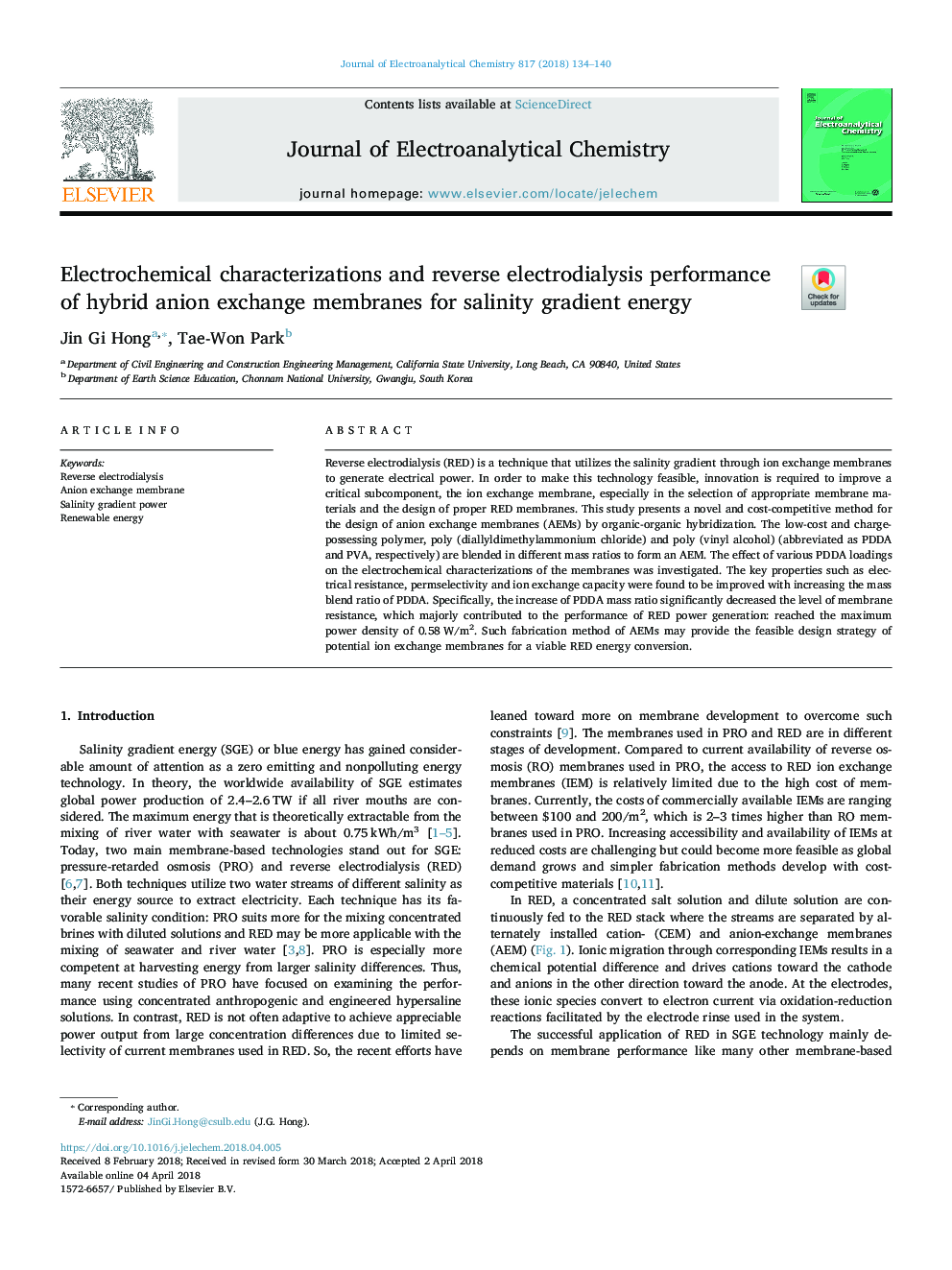| Article ID | Journal | Published Year | Pages | File Type |
|---|---|---|---|---|
| 6661862 | Journal of Electroanalytical Chemistry | 2018 | 7 Pages |
Abstract
Reverse electrodialysis (RED) is a technique that utilizes the salinity gradient through ion exchange membranes to generate electrical power. In order to make this technology feasible, innovation is required to improve a critical subcomponent, the ion exchange membrane, especially in the selection of appropriate membrane materials and the design of proper RED membranes. This study presents a novel and cost-competitive method for the design of anion exchange membranes (AEMs) by organic-organic hybridization. The low-cost and charge-possessing polymer, poly (diallyldimethylammonium chloride) and poly (vinyl alcohol) (abbreviated as PDDA and PVA, respectively) are blended in different mass ratios to form an AEM. The effect of various PDDA loadings on the electrochemical characterizations of the membranes was investigated. The key properties such as electrical resistance, permselectivity and ion exchange capacity were found to be improved with increasing the mass blend ratio of PDDA. Specifically, the increase of PDDA mass ratio significantly decreased the level of membrane resistance, which majorly contributed to the performance of RED power generation: reached the maximum power density of 0.58â¯W/m2. Such fabrication method of AEMs may provide the feasible design strategy of potential ion exchange membranes for a viable RED energy conversion.
Related Topics
Physical Sciences and Engineering
Chemical Engineering
Chemical Engineering (General)
Authors
Jin Gi Hong, Tae-Won Park,
